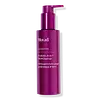What's inside
What's inside
 Key Ingredients
Key Ingredients

 Benefits
Benefits

 Concerns
Concerns

 Ingredients Side-by-side
Ingredients Side-by-side

Water
Skin ConditioningGlycerin
HumectantSodium Cocoyl Isethionate
CleansingCoconut Acid
CleansingPotassium Cocoyl Glycinate
1,2-Hexanediol
Skin ConditioningSodium Isethionate
CleansingBetaine
HumectantHydroxypropyl Starch Phosphate
Parfum
MaskingCitric Acid
BufferingEthylhexylglycerin
Skin ConditioningDisodium EDTA
Sodium Hyaluronate
HumectantLactobacillus Ferment
Skin ConditioningButylene Glycol
HumectantHydrolyzed Hyaluronic Acid
HumectantGossypium Herbaceum Seed Extract
Skin ConditioningSodium Acetylated Hyaluronate
HumectantWater, Glycerin, Sodium Cocoyl Isethionate, Coconut Acid, Potassium Cocoyl Glycinate, 1,2-Hexanediol, Sodium Isethionate, Betaine, Hydroxypropyl Starch Phosphate, Parfum, Citric Acid, Ethylhexylglycerin, Disodium EDTA, Sodium Hyaluronate, Lactobacillus Ferment, Butylene Glycol, Hydrolyzed Hyaluronic Acid, Gossypium Herbaceum Seed Extract, Sodium Acetylated Hyaluronate
Water
Skin ConditioningGlycerin
HumectantDecyl Glucoside
CleansingC13-16 Isoparaffin
SolventHexylene Glycol
EmulsifyingPropanediol
SolventHydroxyethyl Acrylate/Sodium Acryloyldimethyl Taurate Copolymer
Emulsion StabilisingLactobacillus
Skin ConditioningAlpha-Glucan Oligosaccharide
CleansingPolymnia Sonchifolia Root Juice
Skin ConditioningXylitol
HumectantXylitylglucoside
HumectantAnhydroxylitol
HumectantSodium Hyaluronate
HumectantSodium Surfactin
CleansingSqualane
EmollientUrea
BufferingYeast Amino Acids
HumectantTrehalose
HumectantInositol
HumectantTaurine
BufferingBetaine
HumectantIsohexadecane
EmollientCaprylhydroxamic Acid
Maltodextrin
Absorbent1,2-Hexanediol
Skin ConditioningPolysorbate 80
EmulsifyingAcrylamide/Sodium Acryloyldimethyltaurate Copolymer
Emulsion StabilisingCitric Acid
BufferingDisodium EDTA
Water, Glycerin, Decyl Glucoside, C13-16 Isoparaffin, Hexylene Glycol, Propanediol, Hydroxyethyl Acrylate/Sodium Acryloyldimethyl Taurate Copolymer, Lactobacillus, Alpha-Glucan Oligosaccharide, Polymnia Sonchifolia Root Juice, Xylitol, Xylitylglucoside, Anhydroxylitol, Sodium Hyaluronate, Sodium Surfactin, Squalane, Urea, Yeast Amino Acids, Trehalose, Inositol, Taurine, Betaine, Isohexadecane, Caprylhydroxamic Acid, Maltodextrin, 1,2-Hexanediol, Polysorbate 80, Acrylamide/Sodium Acryloyldimethyltaurate Copolymer, Citric Acid, Disodium EDTA
Ingredients Explained
These ingredients are found in both products.
Ingredients higher up in an ingredient list are typically present in a larger amount.
1,2-Hexanediol is a synthetic liquid and another multi-functional powerhouse.
It is a:
- Humectant, drawing moisture into the skin
- Emollient, helping to soften skin
- Solvent, dispersing and stabilizing formulas
- Preservative booster, enhancing the antimicrobial activity of other preservatives
Betaine is a common humectant (a substance that promotes retention of moisture). It's known to be gentle on the skin and can help balance hydration.
This ingredient is best for improving hydration and soothing irritated skin. Studies also show it helps even out skin tone.
Fun fact: Betaine is naturally created in the skin and body. The kind found within cosmetic products can be either plant-derived or synthetic.
Another name for betaine is trimethylglycine.
Learn more about BetaineCitric Acid is an alpha hydroxy acid (AHA) naturally found in citrus fruits like oranges, lemons, and limes.
Like other AHAs, citric acid can exfoliate skin by breaking down the bonds that hold dead skin cells together. This helps reveal smoother and brighter skin underneath.
However, this exfoliating effect only happens at high concentrations (20%) which can be hard to find in cosmetic products.
Due to this, citric acid is usually included in small amounts as a pH adjuster. This helps keep products slightly more acidic and compatible with skin's natural pH.
In skincare formulas, citric acid can:
While it can provide some skin benefits, research shows lactic acid and glycolic acid are generally more effective and less irritating exfoliants.
Most citric acid used in skincare today is made by fermenting sugars (usually from molasses). This synthetic version is identical to the natural citrus form but easier to stabilize and use in formulations.
Read more about some other popular AHA's here:
Learn more about Citric AcidDisodium EDTA plays a role in making products more stable by aiding other preservatives.
It is a chelating agent, meaning it neutralizes metal ions that may be found in a product.
Disodium EDTA is a salt of edetic acid and is found to be safe in cosmetic ingredients.
Learn more about Disodium EDTAGlycerin is already naturally found in your skin. It helps moisturize and protect your skin.
A study from 2016 found glycerin to be more effective as a humectant than AHAs and hyaluronic acid.
As a humectant, it helps the skin stay hydrated by pulling moisture to your skin. The low molecular weight of glycerin allows it to pull moisture into the deeper layers of your skin.
Hydrated skin improves your skin barrier; Your skin barrier helps protect against irritants and bacteria.
Glycerin has also been found to have antimicrobial and antiviral properties. Due to these properties, glycerin is often used in wound and burn treatments.
In cosmetics, glycerin is usually derived from plants such as soybean or palm. However, it can also be sourced from animals, such as tallow or animal fat.
This ingredient is organic, colorless, odorless, and non-toxic.
Glycerin is the name for this ingredient in American English. British English uses Glycerol/Glycerine.
Learn more about GlycerinSodium Hyaluronate is hyaluronic acid's salt form. It is commonly derived from the sodium salt of hyaluronic acid.
Like hyaluronic acid, it is great at holding water and acts as a humectant. This makes it a great skin hydrating ingredient.
Sodium Hyaluronate is naturally occurring in our bodies and is mostly found in eye fluid and joints.
These are some other common types of Hyaluronic Acid:
Learn more about Sodium HyaluronateWater. It's the most common cosmetic ingredient of all. You'll usually see it at the top of ingredient lists, meaning that it makes up the largest part of the product.
So why is it so popular? Water most often acts as a solvent - this means that it helps dissolve other ingredients into the formulation.
You'll also recognize water as that liquid we all need to stay alive. If you see this, drink a glass of water. Stay hydrated!
Learn more about Water